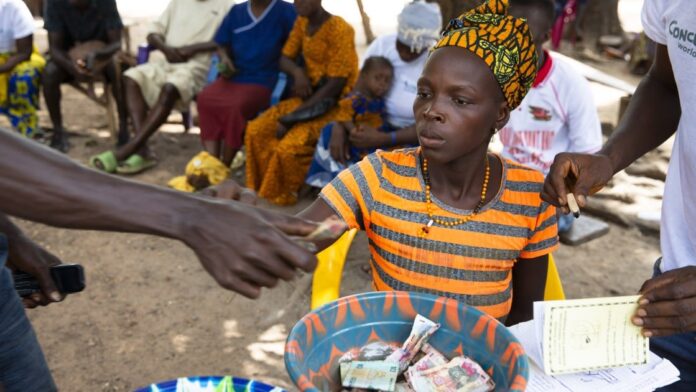The need for government resources, especially in the context of real scarcity of such resources, to be deployed with clear objectives and targets cannot be overemphasised.
The sad reality, however, is that there seem to be still scarce government resources that are being deployed without due regard of the intended outcomes – now this is tragic given the worsening poverty and unemployment situation confronting the country.
The poverty rate is a fiercely contested figure, largely because its rarely used to generate solutions, but is often used in political statements with the sole goal of scoring cheap political points.
| Eswatini Observer WhatsApp Channel
But we trust the UNDP position on this, in its 2023 annual report it actually stated that 58.9% of Emaswati, tragically, live below the poverty line; the poverty line according to the World Bank as set in 2021 is USD 3 (about E54 per day, which translates to about E1620 per month. Oxfam defines a person living poverty as lacking the money and resources to live life to their full potential, people experiencing poverty may not be able to meet basic needs for food, water, shelter and healthcare.
Eswatini Bank Fetch Your Summer Campaign: View Here
Now, as if that was not bad enough, the UNDP report of 2023 further revealed that extreme poverty was getting worse, with 20% of Emaswati living in extreme poverty (living on less than USD 2.15 per person per day), all of these worrying figures are meant to guide government policy positions, and international organisations are on hand to offer technical assistance and best practices.
It remains unclear what has been the impact of these scientific reports on government policy and speed, evidence suggests that the country falls far short in both
Poverty affects the most vulnerable of our people and now with the increase of unemployment the specter of generational poverty is becoming an inevitable reality, a state of affairs that clearly call for Nkwe to be on steroids.
Africa’s problems have largely been characterised in two ways ,the absence of appropriate policies and/or the poor implementation of policies, the country appears to be suffering to the former, absence of appropriate policies which arises from a culture of disregard of scientific reports from international partners.
UNICEF further states that children under five years, approximately 25-26% of them, are actually stunted, meaning they are short for their age due to chronic malnutrition. These figures certainly do not make for a good reading, they are an indictment to those entrusted to lead us, government needs to speedily adopt anti-poverty strategies to reverse the state of affairs.
And, for the umpteenth time we attempt to indicate the areas the government may wish address speedily, and in the majority of cases its rarely a resource issue, but very much a focus issue.
Strategy with numerical targets in critical areas
Child Poverty; To address child or youth poverty the government needs a strategy that will address specific sector-focused policies, for instance children benefitting from the school fees programme as OVC`s can easily be tracked and monitored through their entire life through their identity cards.
A numerical target that informs us how many OVC`s actually develop and gain skills and subsequent formal employment; these children are the most predisposed to fall into poverty given their unfortunate circumstances, the government needs to monitor them and develop policies to address emerging unwelcome trends. OVC’s who drop out of school because of pregnancy and other factors must still remain focused on government efforts, vocational training should be availed to them and again we should have a numerical target to ascertain if we are achieving our desired goals.
Funds dispersed by government through RDF must speak to government targets, the universal access currently embraced by government actually disadvantages youths from poor background, government should have a numerical target of the percentage of such youths she wishes to empower through RDF.

Lifetime unemployment victims ; a sizable number of Emaswati have experienced lifetime unemployment, some of these were once employed in their youth as miners across our borders and some were victims of the string of retrenchments that came after the 1996 industrial national stay away/s, spread across the length and breath of the country are aging people who once worked for companies in the sugar belt, forestry, etc.
Certainly, these individuals are easy to target with preferential treatment/access, this could be in terms of accessing RDF and farm subsidies.
The current universal access approach followed by government ignores all this evidence, the result is that those most desperate for government assistance are unable to access it, instead such scarce government resources are being accessed by people who least need it.
All of these disparities, in terms of what evidence tells us and government programmes, attest to the absence of appropriate government policies.
Formalising the informal sector; here are some facts that no one should ignore, 40.8% of Emaswati make a living in the informal sector and a huge proportion of these are women.
Again, this 40.8 % of Emaswati are not affiliated to any pension scheme meaning the government is faced with increasing demand for social grants in the near future; formalising the informal sector will ensure that this 40.8 % is allowed to make savings for their pension, this should also mean government will avail economic opportunities to more people.
Targeting victims of generational poverty; too many families in communities across the country have become sources for domestic workers and herd boys, many of these youths are actually a second and third generations in these kind of jobs.
We often use an example of a popular lady that used to sell fat cookies to us at Nkhaba Primary School, when she became too old to continue her two daughters took over and made a living until themselves became too old to continue, today a third generation of woman from the same family is doing exactly the same – there is simply no better illustration of generational poverty.
So is the story of a young girl who takes over her mom’s or grand mom’s domestic position. Government resources deployed to Tinkhundla must respond to these really sad stories, government must take the responsibility of breaking the vicious cycle of generational poverty – education is one most effective tool for this, but too many of Emaswati either dropout or are simply unable to make the grades for further education post-high school.
Numerical targets can be made here, families wallowing in poverty are well known, as often times there are a source of cheap labor in the form of domestic workers, herd boys and workers of all sorts of odd jobs.
The current position of government to deploy scarce resources through a universal access approach has lead to a state of affairs where the impact of such resources can hardly be seen, because its being accessed by people who should not be benefitting.
Government strategies and policies that are evidence-led must be speedily developed, the need for such intervention can never be over-emphasised.
The country is otherwise faced with the specter of not just one, but several ticking bombs, the government must develop appropriate policies to diffuse these ticking bombs – failure to do so must constitute high treason.
Eswatini Observer Press Reader | View Here








